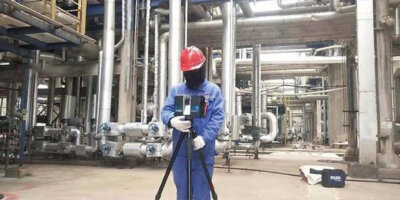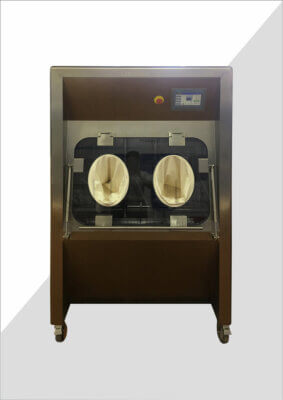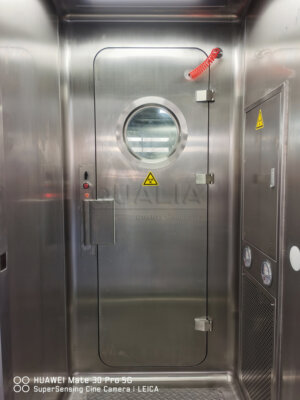The world of regulatory compliance for Effluent Decontamination Systems (EDS) is complex and ever-evolving. As biohazardous waste management becomes increasingly crucial in laboratories and healthcare facilities, understanding and adhering to the strict regulations governing EDS is paramount. This article delves into the intricacies of regulatory compliance for EDS, exploring the key requirements, challenges, and best practices that institutions must navigate to ensure safe and effective liquid waste management.
Regulatory compliance for Effluent Decontamination Systems encompasses a wide range of standards and guidelines set forth by various governing bodies. These regulations are designed to protect public health, safeguard the environment, and maintain the integrity of scientific research. From registration and inspection processes to annual verification and maintenance protocols, facilities must adhere to a comprehensive set of rules to remain compliant and operational.
As we embark on this exploration of EDS regulatory compliance, we'll uncover the essential components of a compliant system, the role of government agencies in oversight, and the critical steps facilities must take to meet and exceed regulatory standards. Whether you're a biosafety officer, laboratory manager, or facility administrator, understanding these regulations is crucial for maintaining a safe and compliant operation.
"Regulatory compliance for Effluent Decontamination Systems is not just about meeting minimum standards; it's about implementing robust systems that ensure the safety of personnel, the public, and the environment while supporting cutting-edge research and healthcare practices."
The journey through EDS regulatory compliance is multifaceted, involving careful planning, diligent implementation, and ongoing monitoring. Let's dive into the key aspects that every facility must consider to navigate this complex landscape successfully.
| Aspect of Compliance | Key Requirements | Governing Body |
|---|---|---|
| Registration | Facility listing, system documentation | Federal Select Agent Program (FSAP) |
| Inspection | Regular audits, performance verification | CDC, APHIS |
| Maintenance | Annual verification, component checks | Facility management, third-party certifiers |
| Validation | Biological efficacy testing, chemical analysis | Independent laboratories |
| Recordkeeping | Operational logs, test results, maintenance records | Facility biosafety committee |
What are the registration requirements for Effluent Decontamination Systems?
The registration process for Effluent Decontamination Systems is a critical first step in ensuring regulatory compliance. Facilities handling select agents or toxins must navigate the complex requirements set forth by the Federal Select Agent Program (FSAP), which is jointly administered by the Centers for Disease Control and Prevention (CDC) and the Animal and Plant Health Inspection Service (APHIS).
Registration involves detailing the specific areas within a facility where select agents or toxins are used or stored. Interestingly, under certain conditions, the room containing the EDS may not need to be listed on the entity's registration, provided it meets specific criteria outlined by the FSAP.
To successfully register an EDS, facilities must provide comprehensive documentation, including system specifications, operational protocols, and safety measures. This process ensures that the EDS is properly integrated into the facility's overall biosafety and biosecurity framework.
"According to FSAP policy, an Effluent Decontamination System room may be exempted from registration listing if it is used solely for the treatment of liquid waste and meets specific design and operational criteria."
| Registration Component | Required Documentation |
|---|---|
| Facility Floor Plan | Detailed layout including EDS location |
| System Specifications | Technical details of EDS components |
| Operational Protocols | Step-by-step procedures for EDS use |
| Safety Measures | Risk assessments and containment strategies |
How often are inspections required for Effluent Decontamination Systems?
Inspections play a crucial role in maintaining the compliance and efficacy of Effluent Decontamination Systems. The frequency and scope of these inspections are determined by regulatory bodies and are designed to ensure that EDS continue to meet the stringent standards required for safe operation.
Typically, facilities can expect both scheduled and unannounced inspections from regulatory agencies. These inspections cover various aspects of the EDS, including physical integrity, operational efficiency, and adherence to established protocols.
Annual inspections are a common requirement, but the exact frequency may vary depending on the facility's risk level and previous compliance history. During these inspections, officials will review documentation, observe system operations, and may request demonstrations of emergency procedures.
"Regular inspections of Effluent Decontamination Systems are not just regulatory requirements; they are essential safeguards that protect the integrity of research, the safety of personnel, and the health of the environment."
| Inspection Type | Frequency | Focus Areas |
|---|---|---|
| Routine | Annual | Overall system performance |
| Compliance | As needed | Adherence to regulations |
| Emergency Response | Post-incident | System integrity after failures |
| Certification | Biennial | HEPA filter efficiency |
What are the key components of annual verification for EDS?
Annual verification is a cornerstone of maintaining regulatory compliance for Effluent Decontamination Systems. This comprehensive process ensures that all aspects of the EDS are functioning correctly and meeting the required standards for waste treatment and containment.
The annual verification process typically includes a thorough examination of system components, biological validation of treatment efficacy, and certification of critical elements such as HEPA filters. Facilities must document these verifications meticulously, as they form a crucial part of the compliance record.
One of the most critical aspects of annual verification is the biological validation, which tests the system's ability to effectively inactivate or remove biological agents from the effluent. This often involves using surrogate organisms to simulate worst-case scenarios and ensure the system can handle potential contamination events.
"Annual verification of Effluent Decontamination Systems is not just a regulatory checkbox; it's a comprehensive assessment that ensures the system can reliably protect against the release of potentially hazardous biological agents."
| Verification Component | Method | Frequency |
|---|---|---|
| Biological Validation | Surrogate organism testing | Annually |
| HEPA Filter Certification | DOP testing | Annually or after replacement |
| Chemical Residual Analysis | Effluent sampling | Quarterly |
| System Integrity Check | Visual and pressure testing | Bi-annually |
How do facilities ensure ongoing compliance between official inspections?
Maintaining continuous compliance with EDS regulations requires a proactive approach that extends beyond official inspections. Facilities must implement robust internal monitoring and maintenance programs to ensure their systems remain in top condition and adhere to all regulatory requirements.
Regular staff training is essential to ensure that all personnel involved in EDS operations are up-to-date with the latest protocols and safety procedures. This includes not only the technicians directly responsible for system operation but also researchers and support staff who may interact with the system.
Implementing a comprehensive preventive maintenance schedule is another critical aspect of ongoing compliance. This includes routine checks, component replacements, and system upgrades as needed. By staying ahead of potential issues, facilities can avoid compliance breaches and system failures.
"Continuous compliance is achieved through a culture of vigilance, where every team member understands their role in maintaining the integrity and efficacy of the Effluent Decontamination System."
| Compliance Activity | Frequency | Responsible Party |
|---|---|---|
| Staff Training | Quarterly | Biosafety Officer |
| System Checks | Daily | EDS Technicians |
| Maintenance Log Review | Monthly | Facility Manager |
| Emergency Drills | Bi-annually | Emergency Response Team |
What role do validation studies play in EDS regulatory compliance?
Validation studies are a critical component of ensuring that Effluent Decontamination Systems meet regulatory standards and effectively neutralize potential biological hazards. These studies provide empirical evidence of the system's efficacy under various conditions and are essential for maintaining compliance.
The validation process typically involves challenging the EDS with surrogate organisms that mimic the characteristics of potential pathogens. These studies must be carefully designed to represent worst-case scenarios and provide statistically significant results that demonstrate the system's reliability.
Regulatory bodies often require facilities to conduct initial validation studies before an EDS is put into service, as well as periodic revalidation to ensure continued efficacy. The results of these studies form a crucial part of the compliance documentation and may be reviewed during inspections.
"Validation studies are the scientific backbone of EDS regulatory compliance, providing quantifiable evidence that the system can effectively protect against the release of hazardous biological agents."
| Validation Aspect | Method | Frequency |
|---|---|---|
| Initial Validation | Full-scale testing | Before commissioning |
| Revalidation | Abbreviated testing | Every 3-5 years |
| Challenge Testing | Surrogate organism introduction | Annually |
| Process Verification | Operational parameter monitoring | Continuous |
How do facilities address regulatory changes and updates?
The regulatory landscape for Effluent Decontamination Systems is not static; it evolves as new technologies emerge and our understanding of biological risks advances. Facilities must stay informed about regulatory changes and be prepared to adapt their systems and procedures accordingly.
Staying current with regulatory updates requires a dedicated approach to information gathering. This may involve subscribing to regulatory newsletters, attending industry conferences, and maintaining open lines of communication with regulatory bodies.
When regulatory changes occur, facilities must assess the impact on their current EDS setup and develop action plans to address any gaps in compliance. This may involve system upgrades, procedural changes, or additional staff training.
"Adapting to regulatory changes is not just about compliance; it's an opportunity to enhance the safety and efficiency of Effluent Decontamination Systems, ultimately benefiting research outcomes and public health."
| Update Management | Action | Frequency |
|---|---|---|
| Regulatory Review | Policy analysis | Quarterly |
| Compliance Assessment | Gap analysis | Annually |
| System Upgrade Planning | Technology evaluation | As needed |
| Staff Update Training | Refresher courses | Upon regulatory changes |
What documentation is required for EDS regulatory compliance?
Proper documentation is the cornerstone of demonstrating regulatory compliance for Effluent Decontamination Systems. Facilities must maintain comprehensive records that cover all aspects of EDS operation, maintenance, and testing.
Key documentation includes standard operating procedures (SOPs), maintenance logs, validation study results, and training records. These documents must be readily accessible for inspection and should provide a clear audit trail of the system's performance and compliance history.
It's crucial to establish a robust document control system that ensures all records are up-to-date, properly reviewed, and securely stored. Many facilities are moving towards electronic documentation systems that offer improved accessibility and version control.
"Meticulous documentation is not just a regulatory requirement; it's a powerful tool for continuous improvement and risk management in Effluent Decontamination System operations."
| Document Type | Content | Retention Period |
|---|---|---|
| SOPs | Operational procedures | Life of the system |
| Maintenance Logs | Service records | 3 years |
| Validation Reports | Study results | 5 years |
| Training Records | Staff certifications | Duration of employment |
How can facilities integrate EDS compliance into their overall biosafety program?
Integrating Effluent Decontamination System compliance into a facility's broader biosafety program is essential for creating a comprehensive safety culture. This integration ensures that EDS operations are not viewed in isolation but as a critical component of the overall biosafety strategy.
One effective approach is to incorporate EDS compliance into the facility's Biosafety Manual, ensuring that all staff members understand the system's role in maintaining a safe working environment. Regular biosafety committee meetings should include updates on EDS performance and compliance status.
QUALIA offers innovative solutions for Effluent Decontamination Systems that are designed with regulatory compliance in mind. Their systems are engineered to meet the stringent requirements of BSL-2, BSL-3, and BSL-4 facilities, ensuring seamless integration into existing biosafety programs.
"A holistic approach to biosafety that includes EDS compliance creates a more robust and resilient safety culture, benefiting researchers, staff, and the broader community."
| Integration Aspect | Implementation | Responsible Party |
|---|---|---|
| Biosafety Manual | EDS section inclusion | Biosafety Officer |
| Risk Assessments | EDS considerations | Biosafety Committee |
| Emergency Plans | EDS failure protocols | Emergency Response Team |
| Biosafety Training | EDS awareness modules | Training Coordinator |
In conclusion, navigating the regulatory landscape for Effluent Decontamination Systems requires a comprehensive understanding of the requirements, diligent implementation of compliance measures, and a commitment to ongoing improvement. From initial registration and regular inspections to annual verifications and adaptations to regulatory changes, facilities must maintain a proactive stance in managing their EDS compliance.
The integration of EDS compliance into the broader biosafety program, coupled with meticulous documentation and validation studies, creates a robust framework for ensuring the safe and effective treatment of liquid biohazardous waste. By prioritizing regulatory compliance, facilities not only meet legal obligations but also contribute to the advancement of safe and responsible scientific research.
As the field of biosafety continues to evolve, staying informed about regulatory updates and leveraging innovative solutions like those offered by QUALIA will be crucial for maintaining state-of-the-art Effluent Decontamination Systems. By embracing a culture of compliance and continuous improvement, facilities can ensure that their EDS not only meets current standards but is also prepared for future challenges in biohazardous waste management.
External Resources
Federal Select Agent Program – Policy Statement – Provides guidance on the registration and inspection requirements for Effluent Decontamination Systems.
CDC – Biosafety in Microbiological and Biomedical Laboratories – Offers comprehensive guidelines on biosafety practices, including sections relevant to liquid waste treatment.
APHIS/CDC Form 1 – Application form for registration of select agent and toxin use, including information on facility areas and EDS.
Applied Biosafety Journal – Publishes research and articles on biosafety topics, including EDS challenges and solutions.
Belgian Biosafety Server – Effluent Decontamination Systems – Provides detailed information on EDS design, operation, and maintenance.
World Health Organization – Laboratory Biosafety Manual – Offers international guidelines on laboratory biosafety, including waste management practices.
- NIH Guidelines for Research Involving Recombinant or Synthetic Nucleic Acid Molecules – Includes sections on proper containment and disposal of biohazardous materials.
Related Contents:
- Ensuring Safety: Validation Protocols for Effluent Decontamination Systems
- Effluent Decontamination: Essential for High-Risk Labs
- Effluent Decontamination Systems for Biosafety Laboratories
- Effluent Decontamination Systems: Safeguarding Biosafety in Laboratories
- Enhancing Safety in Vaccine Production: The Role of EDS
- Thermal Effluent Decontamination: Protecting Our Environment
- Optimizing EDS for Cleanroom Efficiency
- Navigating Regulatory Waters: Effluent Treatment in Biopharma
- Effluent Decontamination Systems: Safeguarding BSL-2, 3, and 4 Labs






























